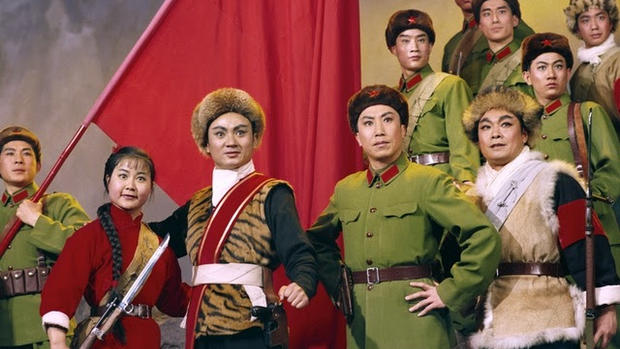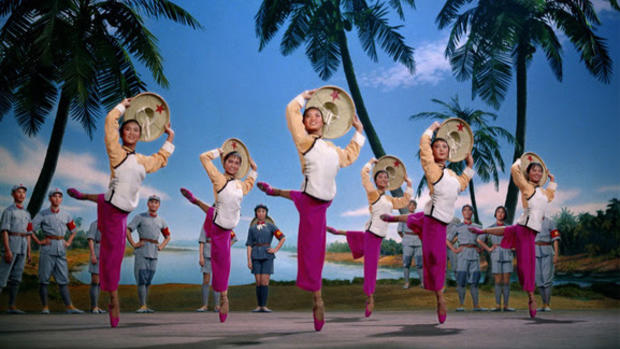Photographer Zhang Yaxin and Madame Mao's model operas
Hidden for decades, rare photos of China's revolutionary model operas have been brought into the light again in recent years, focusing attention on one of the legacies of Chairman Mao Zedong's Great Proletarian Cultural Revolution, which began 50 years ago.
At the start of the Cultural Revolution, Mao banned the traditional Peking operas, along with all forms of Western art, for being "bourgeois." In their place, Mao's wife Jiang Qing, created new model operas, known as yangbanxi, to tell the stories of revolutionary struggles and communist ideals.
In 1967, photographer Zhang Yaxin, who worked for the state-controlled Xinhua News Agency, was handpicked by Jiang to be the official photographer for the movie adaptations of the eight original model operas. Zhang was given one of three Hasselblad cameras imported by Madame Mao and unlimited access to color Kodak film for the top secret project. Zhang was one of the first photographers in China to shoot color. He spent the next seven years documenting this unique artistic enterprise.
Emperors and kings were replaced by heroic images of brave peasants, workers and soldiers of the People's Liberation Army. The heroes battled foreign invaders, evil landlords and enemies of the revolution. The operas were the only officially permitted literary forms during the years of the Cultural Revolution from 1966 to 1976, when Mao died. The original eight model operas are the most well known, but there were a total of 18 created.
The most talented directors, actors, choreographers were all brought together for the productions. While much of the nation went hungry, the movie crews ate meat every day.
Zhang was meant to destroy all the unapproved images, but hid the negatives away in a closet for decades. It wasn't until See+ Gallery owner Qu Shiwen heard about the photographer and arranged to meet with him that he revealed the existence of the hundreds of negatives in nine big boxes in 2006. Qu helped curate the images for exhibitions and print sales. It was the first recognition that Zhang, now 85, received for his work, though many of his photos were used extensively for posters, stamps and other propaganda pieces at the time.
Because of the pervasive use of the official depictions in posters, stamps, calendars, plates and other items, the visual imagery, with their distinct aesthetic, are well known in China and around the world. As Qu explained to CBSNews.com through a translator, "A lot of Chinese have very complicated feelings about these operas because of the Cultural Revolution, but they will sing these songs because for years this is what they had. There's nostalgia as well."
When Qu opened the See+ Gallery in Beijing in 2008, she exhibited Zhang's work for the first time in a solo show. One visitor, a 60-year-old man, "just kept looking and singing all the songs to the opera and dancing. Anyone born before 1960 can probably sing all the songs," said Qu. "Everyone stands and claps even now" when the operas are performed. They were quite literally the sound track of the lives of a generation.
Though the operas fell out of favor once Chairman Mao died and Jiang was put on trial as part of the "Gang of Four," for the excesses of the Cultural Revolution, they experienced a resurgence of sorts in the 1990s. "The Red Detachment of Women" has been performed at Lincoln Center in New York and is part of the Central Ballet of China's repertoire. While the revolutionary meaning may be lost today, the operas and Zhang's photos are still appreciated as a distinct art form.
View Zhang Yaxin's photos on CBSNews.com: Rare photos of China's Cultural Revolution model operas
Zang Yaxin is represented by See+ Gallery in Beijing
Radhika Chalasani is the senior photo editor at CBSNews.com - On Twitter

